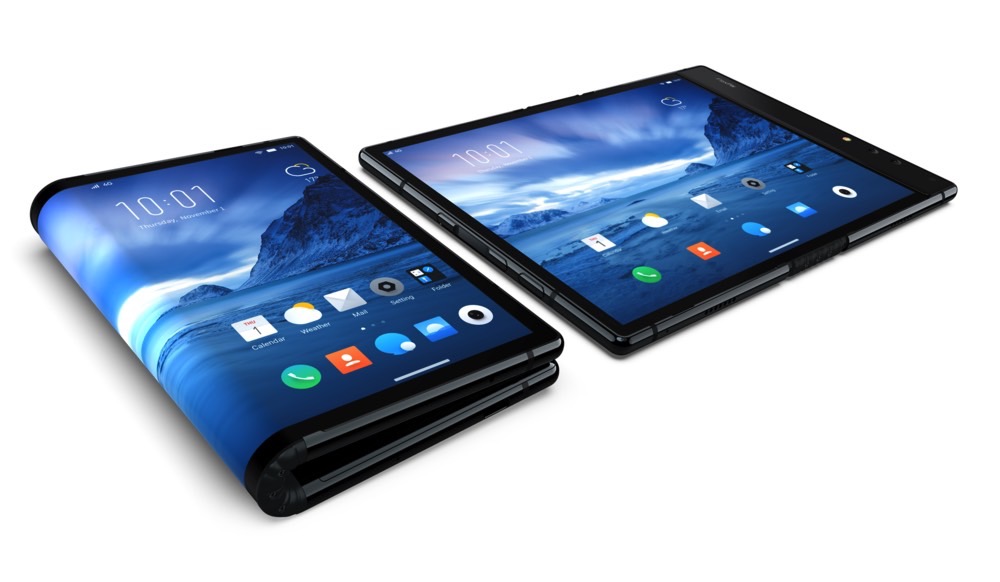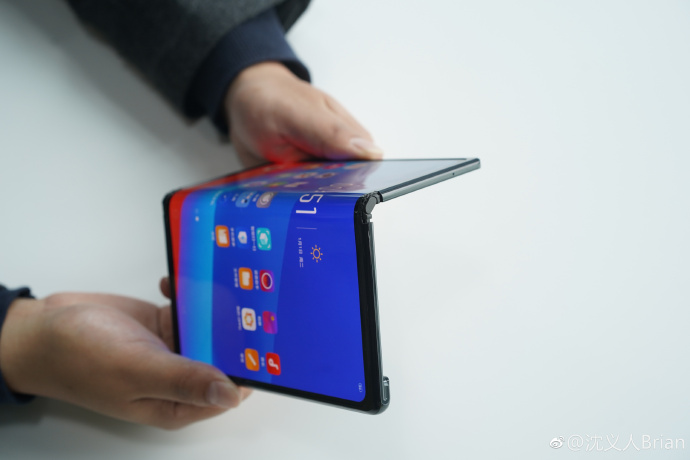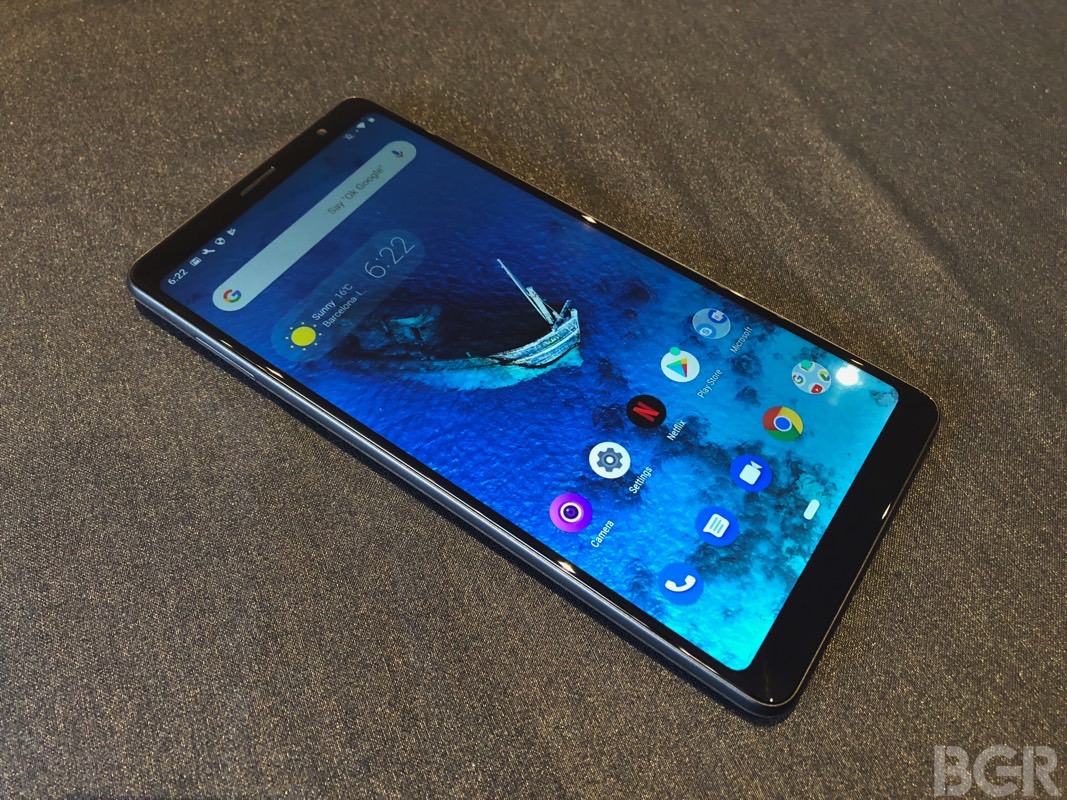It’s official, smartphone aficionados: The next big thing in mobile is the foldable phone — well, that, and 5G, of course. The first foldable phone launched months ago, but the foldables you might actually want were unveiled at and around MWC 2019. First, Samsung with its Galaxy Fold, and then Huawei with the Mate X, showed us the future.
Foldable phones might not be ready for mass consumption yet, and they’ll be a premium product for years to come, but it’s really the only way to further extend the screen of the handset and offer users more screen retail estate on a device intended to fit in your pocket. But the Galaxy Fold and Mate X are hardly the only foldable phones in town, and MWC showed us a few other models that we’ve yet to talk about, as well as a couple of strange contraptions to tide you over until you pick up your first foldable device.
Samsung
Of all the companies making smartphones, only a few of them have the luxury of running a display manufacturer as well. Even fewer happen to manufacture many of the other components that go in phones. That’s why Samsung is likely to be a leader when it comes to foldable handsets no matter what Huawei does.
The Galaxy Fold is the first model of many, the result of years of research, and a device that should feature the latest version of Android. The Fold will sell for $1,980, and will be available in limited supply at launch. Sadly, we weren’t able to try it, even though it’s set to launch to the public in a couple of months.

Huawei
The Mate X is the best looking foldable so far, the best device of MWC 2019 according to the GSMA, and the first 5G foldable ever made. The phone will be even more expensive than the Galaxy Fold, but if you’re looking to be at the forefront of this technology, it might be worth the price of admission. That’s not to say the Mate X is perfect, and there’s still much we don’t know about it. You’ll have to touch one to become a convert.

Royole
The only reason I’m listing this one here is because it came first, months before the Fold and the Mate X. But it probably won’t be the phone you buy. It looks unpolished and un-pocketable, but the company deserves credit for being first. So here’s to you, Royole, for beating Samsung, Huawei, and everyone else to market.

Xiaomi
Remember that great concept that Xiaomi unveiled a few weeks ago, well before Samsung and Huawei dazzled us with actual phones? Well, it turns out the Chinese smartphone maker has no plans of actually manufacturing foldables at this time, VentureBeat reports. When they do, eventually, the first Xiaomi tablets might be a lot cheaper than the others. But Xiaomi won’t be competing with its biggest Android rivals quite yet.
Oppo
Oppo is also making a foldable phone similar to the Mate X, so we’re looking at a wraparound screen placed on the outside of the handset. The device was teased on Weibo during MWC, but wasn’t part of any announcements.

TCL
The owner of the BlackBerry and Alcatel brands, TCL, is also making foldable handsets, aiming to bring at least one to market in 2020, according to reports. The various concepts TCL is working on leaked just before MWC kicked off, but I didn’t have a chance to use any of them. From the looks of these images, the TCL foldables will come in various shapes and sizes, and don’t look nearly as polished as the Galaxy Fold or the Mate X. In other words, TCL will lower the entry-price of the folding phone dramatically, at least compared to other flagships we’ve seen.
https://twitter.com/evleaks/status/1099416290513567745/
Motorola
We’ve heard for a while now that Motorola has been studying foldables, with a plan to revive the Razr brand that was so popular in the middle ages of the mobile industry, well before the iPhone and Android brought about a new world order. And Motorola confirmed at MWC that a foldable handset could arrive as early as the first half of the year, without divulging any details about it. Motorola did hint that the screen won’t be on the outside like the Mate X, which is an indication that those Razr foldable patents might show what the foldable phone will look like.

Lenovo
Lenovo is actually the parent company of Motorola, but we have no idea whether Lenovo-branded foldables are in the works. However, Lenovo did turn a tablet into a smartphone, announcing the mid-range device at MWC. In case you want both a tablet and a smartphone, but can’t afford to buy both, this is a great alternative. It doesn’t fold, but it features a tablet-sized screen along with all the features of a smartphone.

LG
I’ll bring LG into the conversation simply because, like Samsung, LG can also create its own foldable screens for its smartphones. And an old rumor did claim that LG Display is working with Apple on foldable iPhones. But the Korean smartphone maker said a few days ago it won’t make any foldables of its own this year, unlike its competitors. What LG did at MWC 2019 was to come up with a solution to extend the size of the screen that sounds good in theory. In practice, the Dual Screen feature of the LG V50 ThinQ isn’t the greatest idea, though. You’ll understand as soon as you use one. It just doesn’t feel right. And no, it’s not a foldable device, so don’t call it that.

Nubia
Nubia at MWC 2019 showed off a strange foldable watch concept, which I didn’t get to test. It’s probably not the greatest idea, but it still shows that foldable technology will trickle down (or up) to other devices. The Alpha is a smartwatch running Nubia’s own operating system, per TechRadar, which will sell for around $510 later this year. Nubia is a subdidiary of Chinese handset vendor ZTE, which launched a foldable of its own years ago: The ugly ZTE Axon M.

Energizer
Energizer phones have huge batteries, with the 18,000 mAh phone that we saw at MWC 2019 being a prime example of that. But Avenir Mobile, the company who holds the Energizer trademark, also introduced a foldable phone that will have a huge 10,000 mAh battery, and will look like this:

OnePlus
OnePlus may no longer be a startup, but it doesn’t seem to be ready for the jump to foldables quite yet. OnePlus told CNET at MWC that it’s not interested in making foldables for the time being. And if OnePlus went on record to say OnePlus foldables aren’t happening, then they’re not. But if OnePlus sibling Oppo is making foldable devices, OnePlus might one day launch its own handset with a screen that can bend, once the price drops significantly.
Everyone else
Missing in action from the foldable game are three giants: Apple, Google, and Microsoft. We already know Apple has plenty of patents that describe technology that could be used on foldable devices, from wraparound displays to hinge mechanisms. Microsoft, meanwhile, is already confirmed to be adapting Windows 10 for other form factors than laptops and desktops, and the Surface Phone keeps coming up in reports.
I left Google for last because we have no rumors about a foldable Pixel phone at this time. If Google were working on a foldable Pixel phone, everyone would know about it well in advance. Pixels leak. But Google has worked with Samsung to optimize Android for foldables, and Huawei said it’s also collaborating with Google on foldable phones. On top of that, Google is developing Fuchsia, an operating system that’s meant to replace Android and Chrome, and dynamically adapt to any form factor when it comes to screen size or shape. At least, that’s what rumors say.








